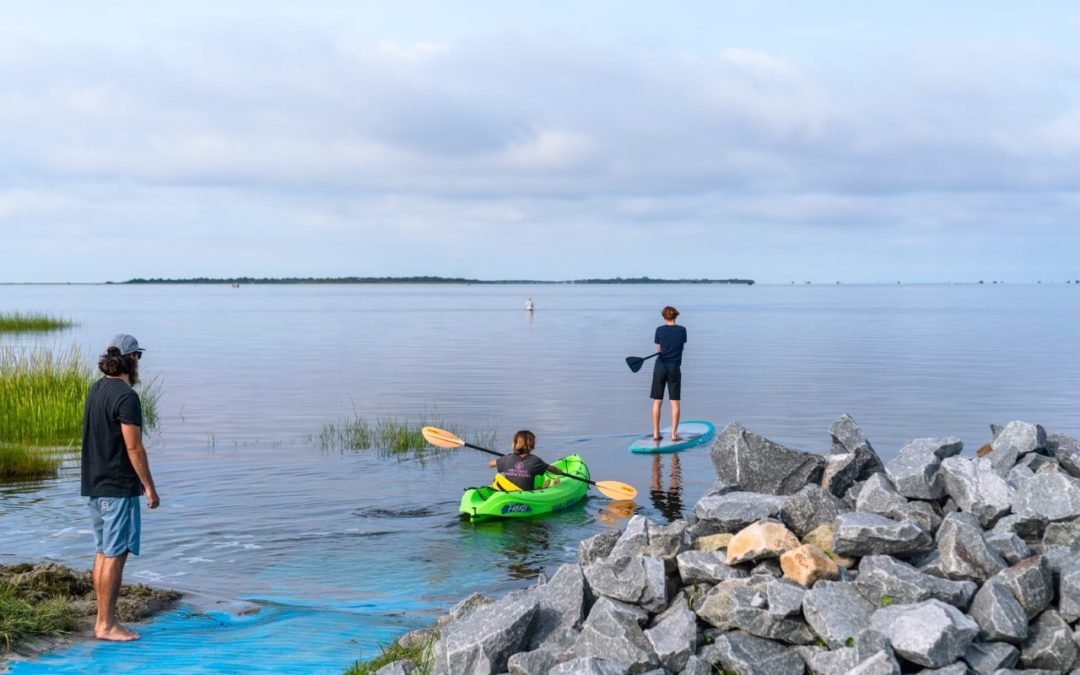Formed by a hurricane in 1846, Oregon Inlet connects the Atlantic Ocean with Pamlico Sound and a maze of inland waterways. Forming a 3,000-square-mile estuary, these waters offer crucial habitat for commercially important fish, shrimp, and shellfish species. Over 95% of North Carolina’s seafood species can be found in Pamlico Sound, thriving in the nutrient-rich shallow water.
Named after the first ship to pass through, Oregon Inlet is one of the few regional access points to the Atlantic Ocean, making it a busy thoroughfare for recreational and commercial fishing vessels. Over the past few years, the National Park Service and its partners have made some improvements to the visitor facilities along the inlet to help provide more opportunities for people to experience and explore this unique part of Cape Hatteras National Seashore.
In 2019, The North Carolina Department of Transportation (NCDOT) completed the Basnight Bridge, replacing the aging Bonner Bridge. This new, state-of-the-art bridge will serve as the main connection and lifeline to Hatteras Island for many decades to come. As part of the replacement project, 1,000 feet of the original Bonner Bridge was retained. Extending into Oregon Inlet from Pea Island, the Bonner Pier serves as a current training device, helping to deflect the ocean current into the middle of the channel to help maintain the navigable waterway.
In partnership with NCDOT and Pea Island National Wildlife Refuge, the National Park Service opened the Bonner Pier to visitor use in October of 2021. This pier has become a popular spot for fishing, walking, and wildlife viewing, while providing one of the best sunrise and sunset locations in the Outer Banks. For more information on the Bonner Bridge Pier, click here.
Oregon Inlet has always been a great gateway to exploring and recreating in the Pamlico Sound. In 2021, the National Park Service and Outer Banks Forever opened the Oregon Inlet Kayak Launch, providing safe and easy access for kayakers to enter the waters of Pamlico Sound. Enhanced parking, an accessible approach, and educational signage help locals and visitors alike have a safe and enjoyable kayaking experience.
Adapted from the National Park Service. Originally published in the 2022 edition of the Outer Banks Group’s “In the Parks” newspaper.

